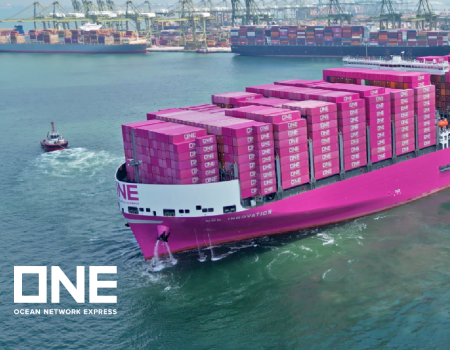=Greater care of equipment and the accuracy of data are crucial in avoiding damage to and loss of perishable goods in transit. TT Club’s Claims Executive, Mike Yarwood outlines the key factors in managing risk when handling and transporting temperature-controlled commodities.
Temperature controlled cargoes are inherently perishable and present greater challenges and risk exposures for the logistics operator than cargoes carried at ambient. As the world’s specialised ‘reefer ship’ fleet declines, it is predicted that containers will be utilised for up to 75% of all maritime temperature controlled cargo shipments by next year. So the process of correctly packing, handling and monitoring refrigerated containers and their cargoes is one that will continue to demand attention.
Whilst perishable cargo is often high paying freight, it can also give rise to high value exposures; a container of lobsters, for instance, could command a value nearing USD 500,000, giving adequate incentive for extra care to be taken.
As an insurer of this supply chain process TT Club has experience of how things can go wrong, sometimes as a result of the most straightforward of errors or misunderstandings.
We find that the majority of insurance claims involving perishable cargo occur due to:
1. Confusion over Celsius and Fahrenheit
2. Poor communication of requirements (plus versus minus temperatures)
3. Lack of monitoring of or power supply for the container throughout its journey.
Across Europe we’ve experienced instances of ambient cargoes such as bread and chocolate, being mistakenly shipped in deep freeze conditions, which has resulted in a dramatic deterioration of the cargo and consequent claims of total loss. Conversely , and perhaps more commonly, we experience cargoes such as fish, animal carcasses and dairy produce which should be shipped under deep freeze conditions below -18DegC, which arrive at the consignee for example at +18DegC. Such issues inevitably result in the consignee rejecting the cargo and potentially significant claims exposures, not just for the value of the cargo but also the costs of disposal.
There are innumerable opportunities throughout a supply chain for such errors, any one of which can compromise the sound condition of the cargo. Often the simplest of errors result in high value claims from cargo owners. Foodstuffs especially are subject to stringent restrictions to ensure safety through the food chain. These will often dictate that even the smallest abuse in temperature can result in the refusal of cargo condemned as unfit for consumption. Likewise, pharmaceuticals can be extremely sensitive.
Hopefully these experiences can help point the way for forwarders, carriers and logistics operators to avoid such cargo loss. In the first instance it is vital to know the shipper when handling temperature controlled cargoes. It is fundamentally the responsibility of the shipper to provide specific instructions and requirements regarding the carriage of the cargo, which the forwarder needs to understand correctly. It is increasingly the case, however, that this shipper responsibility is delegated to the logistics service provider, not least when full supply chain managed operations are undertaken. In these cases the operator assumes responsibility for the entire supply chain. Whatever the circumstance the logistics provider should actively seek advice, clarification and agreement from the shipper regarding such requirements, and contracts specifying these should be regularly checked, especially at renewal.
It should also be noted that industry regulations – and therefore carriage requirements – have the potential to change for perishable cargoes fairly regularly. A useful guide to such regulations is IATA’s Perishable Cargo Regulations (PCR) manual. While produced mainly for air cargo specialists it has useful guidance for transport by all modes. It provides an outline of the most current and efficient practices for perishable cargo operations including, in particular foodstuffs and pharmaceuticals.
Thus, for the majority of cargoes, the shipper will declare a set temperature at which the cargo is to be maintained throughout the duration of the transit. For less sensitive chilled cargoes, a range of acceptable temperatures may be stipulated. In either case when sub-contracting transport moves, whether short domestic transfers or international containerised movements, it is essential to ensure that clear and accurate written instructions are passed down the contractual chain. The margins for error are often very small, the difference between “minus” and “plus” temperature can be easily confused or lost in communications and will likely have catastrophic effects on the cargo. Freezing an ambient cargo can be just as damaging as overheating a frozen cargo. Accurate transmission of the temperature settings through the supply chain is clearly critical.
Furthermore, while the Centigrade scale is most widely used and recognised globally, the USA for example uses Fahrenheit. Adding to the confusion, 0°C is a widely recognised temperature setting for chilled cargoes, whilst 0°F is a widely recognised temperature setting for frozen cargoes. Again accurate communication is the key to avoiding potential losses.
Once the shipping instructions have been made clear, the container needs to be functioning properly. Reefer equipment should be regularly inspected for conformity, especially prior to loading and such units should be properly serviced and maintained. Visual checks for damage should also be carried out prior to packing. Damage to the internal vents, perhaps caused by previous poor stowage, can severely affect the efficiency of air flow through the transport unit, which in turn can result in the actual temperature never reaching the set point temperature.
It is also essential to check regularly that the data logger equipment is fully functional. As technology has developed in recent years, it is now possible to monitor such data remotely and even for warnings to be raised when temperatures fluctuate unexpectedly. However, such technology is of little value if the data logger itself is not operational.
Pre-packing checks and correct packing also play an important role. The transport unit should be in good condition, clean and free from odour. The cargo must be evenly distributed with due care taken to ensure a free flow of air and pallets stacked safely and securely. Crucially, cargo should be cooled to the desired carrying temperature prior to loading. The reefer unit is not designed to cool cargo down, merely to maintain the set point temperature. At TT Club we have found that cargo packed at elevated temperatures is one of the leading causes of cargo claims.
Where cargoes are stowed at an elevated temperature the result is often that the data logger will continue to record higher than expected temperatures for an extended period through the early stages of transit. Whilst in some less dramatic examples the temperatures and recordings do reach set point after a number of hours, we have experienced instances where the set point temperature is simply never achieved. Cargoes are consequently rejected by the consignee leaving the carrier in an unenviable position given that he has adhered to instructions and all his records evidence that the unit was set correctly. The data logger however is registering and recording much higher temperatures. The initial view following such an incident is often that the equipment is at fault. This assumption, coupled with the data logger records, provides the consignee with a legitimate argument to reject the cargo. In such disputes, the party responsible for packing cargo at an incorrect temperature simply remains silent, relying on the data logger records as a defence to any potential claim.
Through post incident investigations we also see evidence of unexplained breaks in the cool chain. Where frozen cargoes are concerned, such breaks in the cool chain can result in freeze/thaw activity which can render a cargo a total loss due to the onset of ice crystallisation. Such temporary breaks in the cool chain can be attributed to drivers physically switching the reefer unit off during rest periods or breaks in power supply between modes of transport. When running, a reefer unit can be noisy and therefore difficult to sleep through; whilst they are certainly much quieter when switched off, they also tend to be less effective.
Whilst prevention is better than cure, if things do go wrong when dealing with temperature sensitive cargoes, time is of the essence. Proactive intervention after an issue has been discovered can have a dramatic effect in mitigating a potential loss. Further, following discovery of an issue, appointing an expert to attend and assess a cargo which is alleged to have suffered temperature abuse can often result in at least a portion of the cargo being either accepted or saved by means of a salvage sale.
Key Points to take away:-
1. Know your shipper
2. Understand the correct requirements for the specific cargo being transported and verify them
3. Ensure accurate information is passed through the contractual chain
4. Ensure equipment is in good order and monitor the entire cool chain







